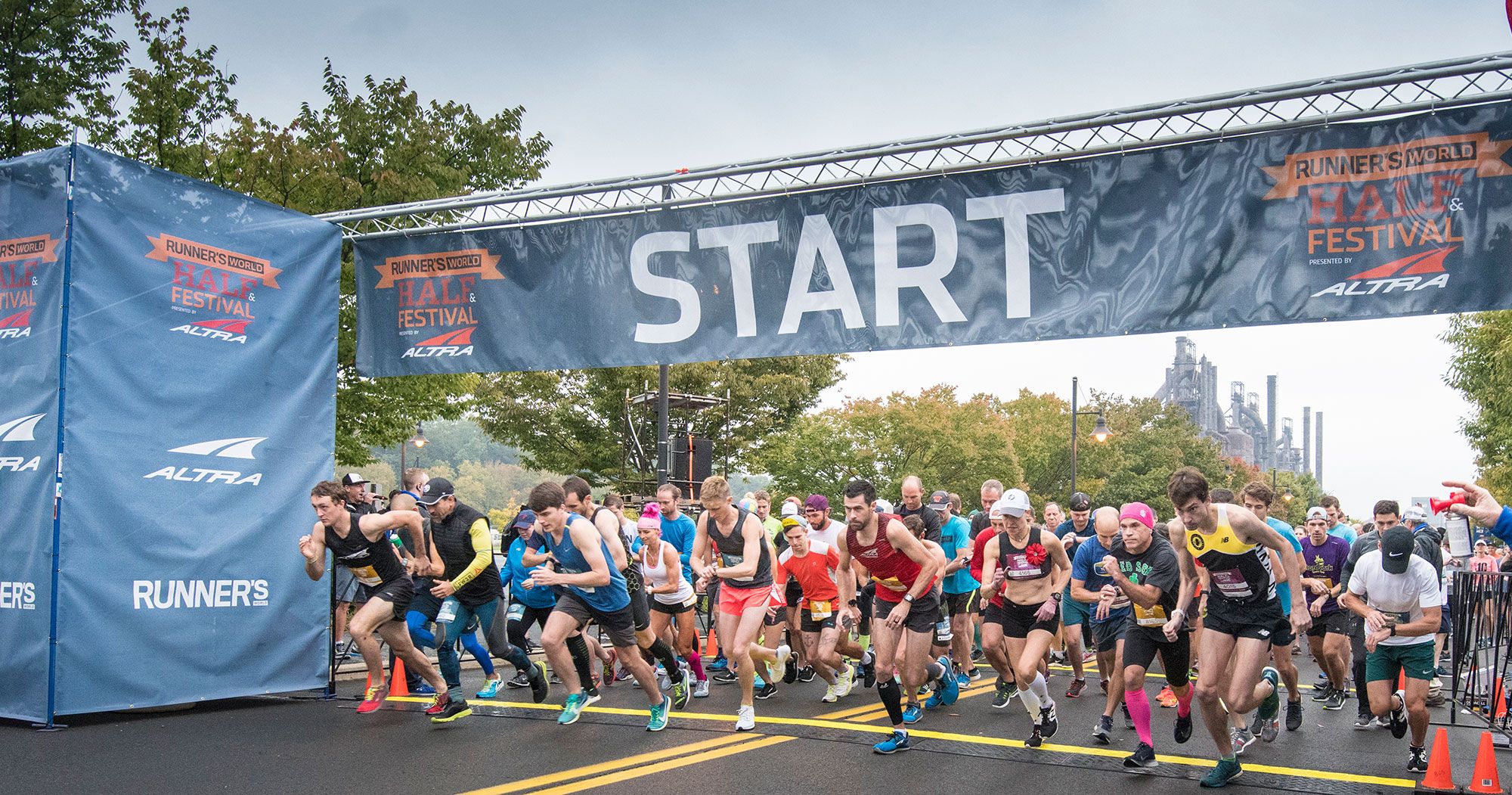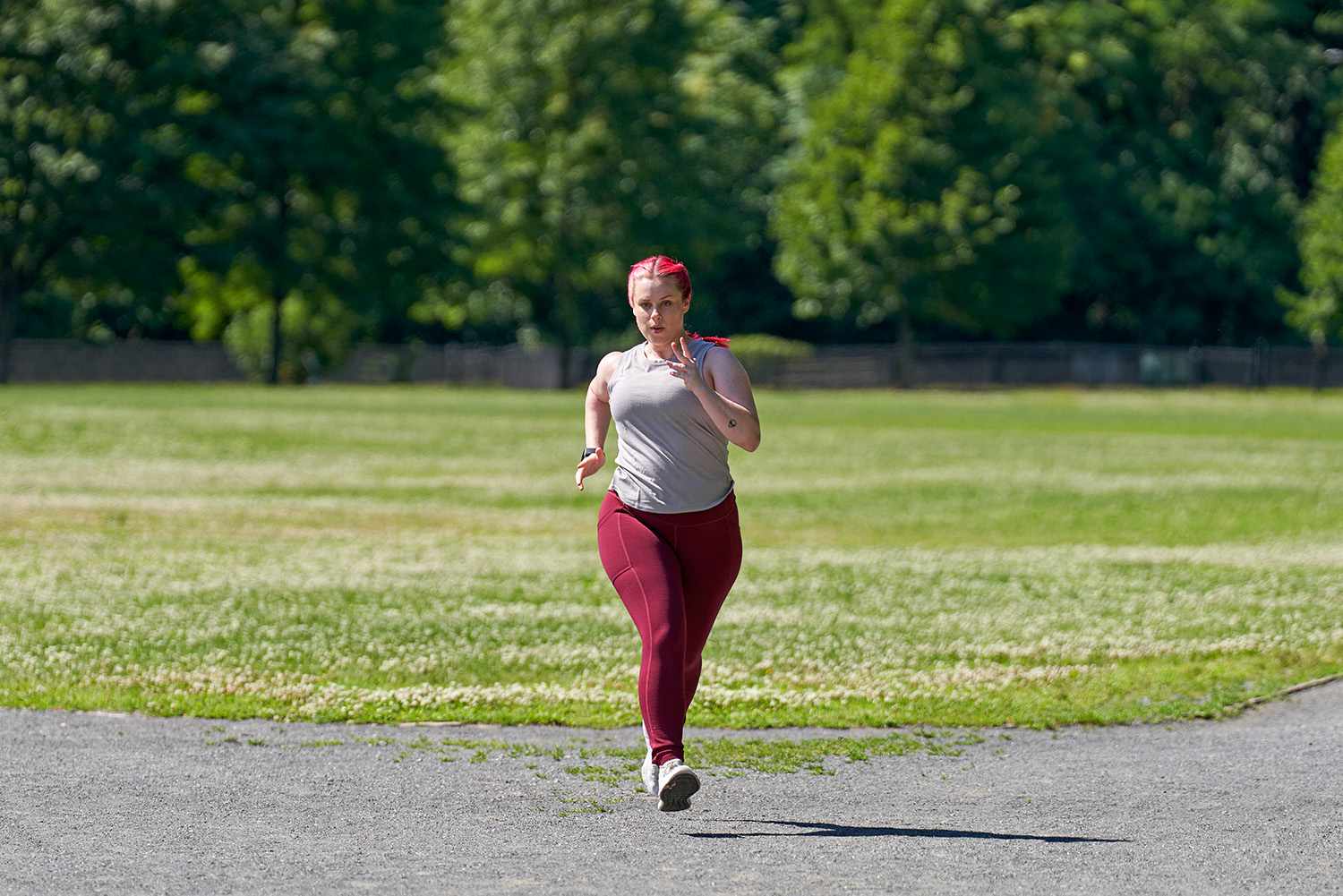

Featured
How To Plot A 5K Run
Modified: January 2, 2024
Learn how to plot a featured 5K run with our step-by-step guide. Start planning your next race and make it a memorable experience.
Introduction
If you’re looking to challenge yourself and participate in a 5K run, you’re in for an exhilarating experience. A 5K run, also known as a 5-kilometer race, is a popular choice for both seasoned runners and beginners alike. It’s a great way to improve your fitness level, set personal goals, and enjoy the camaraderie of other participants.
Whether you’re aiming to complete your first 5K or beat your personal record, proper planning and preparation are key to a successful race. In this article, we’ll guide you through the essential steps you need to take to plot a 5K run that suits your fitness level and goals.
Before we delve into the details, it’s important to note that while we’ll provide guidance, each individual is unique, and you should adapt these recommendations to fit your specific needs and abilities.
Now, let’s get started and learn how to plot a 5K run that will have you crossing the finish line with a sense of accomplishment and pride.
Step 1: Set Your Goal
Before you begin planning your 5K run, it’s important to set a specific goal for yourself. Having a clear objective will help you stay motivated and focused throughout your training. Your goal could be as simple as completing the race or as ambitious as achieving a specific time.
Consider your current fitness level and any previous running experience when setting your goal. If you’re new to running, it may be realistic to aim for completing the 5K without stopping. On the other hand, if you’re an experienced runner looking to push your limits, you may set a time goal to beat your personal record.
When setting your goal, make sure it is realistic and achievable within the timeframe you have in mind. It’s important to challenge yourself, but also to be mindful of your abilities and limitations. Setting an unrealistic goal may lead to disappointment or even injury.
In addition to setting a goal for your race, consider setting smaller milestones along the way. These milestones can be weekly or monthly targets that help you track your progress and keep you motivated throughout your training. For example, you can set a milestone of running a certain distance without stopping or improving your pace by a specific amount.
Remember, goals are personal, and what works for someone else may not work for you. Take the time to reflect on your aspirations and what you want to achieve from the 5K run. Set a goal that excites you and keeps you determined throughout your training.
Step 2: Plan Your Route
Once you’ve set your goal, the next step in plotting your 5K run is to plan your route. Choosing the right route can make a significant difference in your overall race experience. Here’s how you can go about planning your route:
1. Research: Start by researching local running trails, parks, or neighborhoods that have suitable paths for a 5K distance. Look for routes that are well-maintained, flat or have a manageable incline, and provide a safe and enjoyable running environment.
2. Measure the Distance: Use a GPS watch, smartphone app, or online mapping tool to accurately measure the distance of your chosen route. Make sure it aligns with the 5K distance (approximately 3.1 miles). This will help you track your progress during training and ensure that you stay on track for race day.
3. Consider Terrain and Surface: Take into account the terrain and surface of the route. Running on different terrains, such as pavement, trail, or track, can provide a varied and stimulating experience, but also require different levels of effort. Consider your fitness level and preference when choosing the terrain.
4. Traffic and Safety: Ensure that the route you select has minimal vehicle traffic and provides a safe running environment. Check for sidewalks, pedestrian-friendly areas, well-lit streets, and minimal road crossings. Safety should be a top priority when planning your route.
5. Variation: To keep your training interesting, consider incorporating different routes into your routine. This will help you avoid monotony and keep you motivated. Exploring new routes can also expose you to scenic views and different running surfaces, which can enhance your overall running experience.
Once you’ve planned your route, map it out and keep a record of the distance, elevation changes, and any important landmarks or points of interest along the way. This will not only help you stay on track during training but also enable you to visualize the route and mentally prepare for the race.
Remember, selecting an enjoyable and suitable route can make your 5K run more pleasant and give you an added sense of accomplishment when you cross that finish line.
Step 3: Consider Terrain and Elevation
When planning your 5K run, it’s essential to consider the terrain and elevation of your chosen route. The terrain and elevation can have a significant impact on the difficulty level of your run and your overall performance. Here are some factors to keep in mind:
1. Flat vs. Hilly Routes: Consider whether you prefer a flat route or one with varying elevations. Flat routes are generally easier to run and may be preferable for beginners or those aiming for a faster time. On the other hand, running on hilly terrain challenges your muscles and cardiovascular system, helping to improve strength and endurance.
2. Gradual vs. Steep Inclines: If your chosen route includes hills or inclines, consider the steepness of the incline. Gradual inclines are easier to navigate and allow for a more consistent pace. Steep inclines, on the other hand, require greater effort and may necessitate adjustments in your running form and pace.
3. Surface Types: Different surfaces can have an impact on your running experience. Pavement is the most commonly used surface for running, but you can also consider trails or softer surfaces like grass or dirt paths. Just keep in mind that running on different surface types may require different levels of stability and impact absorption.
4. Climate and Weather Conditions: Take into account the climate and weather conditions of your chosen route. Extreme heat or cold, strong winds, or rainy conditions can affect your performance and overall comfort during the run. If possible, choose a route that offers shade or has water stations along the way to stay hydrated.
5. Training Adaptations: Incorporate specific training adaptations based on the terrain and elevation of your chosen route. If you’re running on a hilly route, include hill workouts in your training to build strength and improve your ability to tackle inclines. If you’re running on a flat route, consider incorporating speed intervals to improve your overall pace and endurance.
Remember, understanding and adapting to the terrain and elevation of your route will better prepare you for race day. It’s important to gradually adjust to more challenging routes and terrain types to avoid injury and optimize your performance.
Step 4: Determine Your Pace
Determining the right pace for your 5K run is crucial for a successful race. Your pace can impact your performance, endurance, and overall enjoyment of the run. Here are some tips to help you find your ideal pace:
1. Find Your Baseline: Start by running a timed, solo 5K to establish your baseline pace. This will give you an idea of your current fitness level and help you set realistic goals for improvement. Make note of your finish time and average pace during this run.
2. Set Realistic Goals: Once you have your baseline pace, set realistic goals based on your current fitness level and training time. Consider the distance of your race, terrain, and any other factors that may affect your performance. Setting achievable and incremental goals will help you stay motivated and track your progress over time.
3. Listen to Your Body: Pay attention to your body’s signals during training and adjust your pace accordingly. Going too fast can lead to burnout or injury, while going too slow may prevent you from reaching your full potential. Find a balance that allows you to maintain a steady and comfortable pace throughout the race.
4. Utilize a Running App or GPS Watch: Utilizing a running app or GPS watch can help you track your pace during training and on race day. These tools provide real-time feedback on your pace, distance, and time, allowing you to make adjustments as needed. They can also provide insights into your running cadence and help you maintain a consistent speed.
5. Practice Negative Splits: Negative splits refer to running the second half of your race at a faster pace than the first. This pacing strategy can help conserve energy and give you a boost of confidence as you finish strong. During training, incorporate workouts that focus on running progressively faster as you go.
Remember, finding your ideal pace may require some trial and error. Be patient and give yourself time to adjust and improve. As you gain experience and confidence, you’ll be able to fine-tune your pace to achieve your goals and maximize your performance during the 5K run.
Step 5: Warm Up and Stretch
Preparing your body for the 5K run is essential to prevent injuries and optimize your performance. A proper warm-up and stretching routine can help increase blood flow to your muscles, improve flexibility, and mentally prepare you for the race ahead. Here are a few guidelines to follow:
1. Dynamic Warm-Up: Start with a dynamic warm-up to get your muscles and joints moving. Incorporate exercises like leg swings, high knees, butt kicks, and walking lunges to increase your heart rate and warm up the major muscle groups you’ll be using during the run. Aim to spend 5-10 minutes on your warm-up.
2. Joint Mobility Exercises: Include joint mobility exercises, such as arm circles, wrist rotations, and ankle rotations, to improve the range of motion in your joints. This will help you move more efficiently and reduce the risk of joint-related issues during the run.
3. Stretching: After your warm-up, perform static stretches to elongate and relax your muscles. Focus on stretches that target your calves, hamstrings, quadriceps, hip flexors, and glutes. Hold each stretch for 15-30 seconds and remember to breathe deeply. Avoid bouncing or jerking movements during the stretches, as this can lead to injury.
4. Mental Preparation: Use your warm-up and stretching routine as a time to mentally prepare yourself for the race. Visualize yourself running with ease, feeling strong and confident. Take a few moments to focus on your breathing and clear your mind of any distractions.
5. Gradual Start: Once you’ve completed your warm-up and stretching, start your run at a relaxed and comfortable pace. Give yourself time to ease into the run and allow your body to adjust to the increased intensity. This gradual start will help prevent muscle strain and allow for a more enjoyable and controlled run.
Remember, warming up and stretching should be a regular part of your training routine. Skipping this step can increase the risk of injury and hinder your performance. Dedicate the time and effort to properly warm up and stretch before each training session and on race day, and you’ll be setting yourself up for a successful 5K run.
Step 6: Monitor Your Heart Rate
Monitoring your heart rate during your 5K run can provide valuable insights into how hard your body is working and help you optimize your performance. By paying attention to your heart rate, you can gauge your effort level, avoid pushing too hard, and maintain a sustainable pace. Here are some tips for monitoring your heart rate:
1. Establish Your Baseline: Before you start monitoring your heart rate during your 5K training, establish your resting heart rate. Measure your heart rate in the morning, while still lying in bed, for several consecutive days. This will give you an average resting heart rate to compare against during your runs.
2. Determine Your Target Heart Rate Zone: Calculate your target heart rate zone using a heart rate reserve formula. This will help you identify the ideal heart rate range for your training runs. Your target heart rate zone should be around 60-80% of your maximum heart rate. You can use online calculators or consult with a fitness professional to determine your target heart rate zone.
3. Use a Heart Rate Monitor: Invest in a heart rate monitor to accurately track your heart rate during your runs. These devices can be worn on your wrist, chest, or even integrated into fitness trackers or smartwatches. A heart rate monitor will provide real-time feedback, allowing you to make adjustments to your pace if necessary.
4. Listen to Your Body: While monitoring your heart rate is important, it’s equally important to listen to your body’s cues. Your heart rate should be used as a guideline, but factors such as fatigue, breathing rate, and perceived exertion should also be considered. It’s essential to find a balance between pushing yourself and avoiding overexertion.
5. Adjust Your Pace: Based on your heart rate readings, make adjustments to your pace during your training runs. If your heart rate is consistently too high, slow down to bring it within your target heart rate zone. If your heart rate is below your target zone, you may be able to increase your pace slightly to challenge yourself.
Remember, monitoring your heart rate is a valuable tool to guide your training and help you run smarter. By being aware of your heart rate and making adjustments as needed, you can optimize your performance and prevent overexertion during your 5K run.
Step 7: Find a Running Buddy or Group
Running with a buddy or joining a running group can provide numerous benefits when preparing for a 5K run. Having a running partner or a supportive community can help you stay motivated, accountable, and make the training experience more enjoyable. Here’s why finding a running buddy or group is beneficial:
1. Motivation and Accountability: Running with a buddy or group can provide a boost of motivation on those days when you’re feeling less inclined to lace up your running shoes. Knowing that someone is counting on you to show up for a run can make it easier to stick to your training schedule. You can encourage each other, celebrate milestones together, and provide support during challenging times.
2. Safety: Running with a buddy or in a group enhances your safety, particularly if you’re running in dimly lit areas or unfamiliar neighborhoods. You can look out for each other, increase visibility, and provide an extra level of security. Additionally, running in a group can deter potential threats and ensure a more enjoyable experience.
3. Sharing Experiences and Tips: Running with others allows you to share your experiences, challenges, and triumphs with like-minded individuals. You can exchange training tips, discuss race strategies, and learn from each other’s successes and failures. This camaraderie fosters a supportive environment and can positively impact your performance.
4. Variety and New Routes: Running with a buddy or group introduces you to new routes and running locations. Each member can take turns suggesting different running paths, adding variety to your training routine. Exploring new routes, experiencing different terrains, and enjoying scenic views together can make your training more exciting and engaging.
5. Social Engagement and Fun: Running with others brings a social element to your training. The shared experience of running together can foster friendships and create lasting bonds. Running shouldn’t always be serious – it’s important to have fun and enjoy the journey. Shared laughter, conversations, and celebrating milestones as a group can make the entire process more fulfilling.
If you’re looking for a running buddy or group, reach out to local running clubs, fitness communities, or use online platforms to connect with like-minded individuals in your area. Many cities have organized events, group runs, or training programs specifically designed for runners of all levels.
Remember, finding a running buddy or joining a running group adds a whole new dimension to your training journey. Running with others not only enhances your motivation and accountability but also facilitates the formation of meaningful connections with fellow runners.
Step 8: Incorporate Interval Training
Incorporating interval training into your 5K run training routine can significantly improve your speed, endurance, and overall performance. Interval training involves alternating between periods of high-intensity effort and periods of active recovery. Here’s why incorporating interval training is beneficial:
1. Improved Cardiovascular Fitness: Interval training pushes your cardiovascular system to work harder and adapt to the demands of intense exercise. By regularly incorporating high-intensity intervals into your training, you can increase your maximum oxygen uptake (VO2 max) and enhance your cardiovascular fitness level. This translates to improved endurance and an ability to sustain a faster pace during your 5K run.
2. Increased Speed: Intervals are an effective way to improve your running speed. By repeatedly running at a higher intensity during the work intervals, you challenge your muscles and teach your body to tolerate higher speeds. With consistent interval training, you’ll gradually increase your speed and be able to maintain a faster pace during your 5K run.
3. Fat Burning Potential: Interval training is known for its ability to burn calories and promote fat loss. The high-intensity intervals, combined with the active recovery periods, create an effective calorie-burning workout. This can help you reduce body fat and improve body composition, which can positively impact your overall performance.
4. Mental Toughness: Interval training pushes you out of your comfort zone and challenges you mentally. The intense efforts and the drive to push through physical fatigue build mental resilience and discipline. This mental toughness will be invaluable not only during your 5K run but also in other areas of life.
5. Time Efficiency: Interval training is a time-efficient way to improve your fitness. You can achieve significant results in less time compared to steady-state running. Short, intense bursts of effort followed by active recovery allow you to work at a higher intensity in a shorter amount of time.
When incorporating interval training into your routine, start with shorter intervals, such as 30 seconds to 1 minute of intense effort, followed by an equal or slightly longer recovery period. As you progress, gradually increase the duration and intensity of the intervals. Remember to include a proper warm-up and cool-down to prevent injury and maximize the benefits of interval training.
Integrate interval sessions into your training plan 1-2 times per week, alternating them with your regular steady-state runs. This combination of interval training and longer runs will enhance your overall fitness and help you achieve your best performance during your 5K run.
Step 9: Track Your Progress
Tracking your progress throughout your 5K run training is essential for monitoring your improvement, staying motivated, and making necessary adjustments to your training plan. Here’s why tracking your progress is beneficial:
1. Measure Performance: By consistently tracking your progress, you can measure your performance and see how far you’ve come. Keep a record of your training runs, including distance, time, and average pace. This allows you to identify trends, track improvements, and set new goals for yourself.
2. Identify Strengths and Weaknesses: Tracking your progress helps you identify your strengths and weaknesses in running. You may notice areas where you excel, such as sprinting or endurance, and areas that require more attention, such as speed or hill climbing. This insight allows you to focus on specific aspects of your training and implement targeted workouts to address any weaknesses.
3. Adjust Training Plan: Monitoring your progress allows you to make necessary adjustments to your training plan. If you notice that you consistently struggle with a particular type of workout, such as tempo runs or intervals, you can modify your training to focus more on those areas. Likewise, if you see significant improvements in certain aspects of your running, you can adjust your goals or increase the challenge to ensure continued progress.
4. Stay Motivated: Tracking your progress provides visible proof of your hard work and can boost your motivation. Seeing that you’re getting faster, running longer distances, or improving your overall fitness level can be incredibly rewarding. This sense of accomplishment fuels your motivation to keep pushing forward and maintain consistency in your training.
5. Celebrate Milestones: Tracking your progress allows you to celebrate milestones along your journey. Whether it’s completing your first 5K training run without stopping, achieving a new personal record, or reaching a specific distance target, acknowledging and celebrating these achievements keeps you motivated and reinforces the progress you’ve made.
Utilize a training log, a mobile app, or a running watch to accurately track your progress. Record your training runs, race results, and any notable observations or reflections. This comprehensive record provides a valuable reference point when evaluating your progress and planning future training adjustments.
Remember, tracking your progress is a powerful tool to help you stay on track and reach your goals. It offers insights into your strengths and weaknesses, allows for adjustments to your training plan, and keeps you motivated as you strive for success in your 5K run.
Step 10: Stay Motivated
Staying motivated throughout your 5K run training is crucial for maintaining consistency and achieving your goals. Motivation provides the drive and determination necessary to overcome challenges and push through the tough moments. Here are some effective strategies to help you stay motivated:
1. Set Clear Goals: Continually remind yourself of why you embarked on this journey to complete a 5K run. Set clear and realistic goals that are meaningful to you. Whether it’s improving your fitness, challenging yourself, or supporting a cause, having a strong sense of purpose will keep you motivated throughout your training.
2. Celebrate Small Wins: Celebrate your achievements along the way, no matter how small they may seem. Recognize and acknowledge the progress you’re making, whether it’s running a longer distance, achieving a faster pace, or sticking to your training plan for a specific period. Small wins build momentum and boost your confidence.
3. Mix Up Your Training: Avoid falling into a monotonous routine by incorporating variety into your training. Try different running routes, modify your workout intensity, or participate in fun running events or virtual races. Mixing up your training keeps things interesting and prevents burnout.
4. Find Inspiration: Surround yourself with sources of inspiration that ignite your passion for running. Follow professional runners on social media, read motivational books or articles, or listen to podcasts that share inspiring running stories. Drawing inspiration from others can help you stay motivated and remind you of the potential within yourself.
5. Buddy Up: Find a running buddy or join a running group to provide social support and accountability. Running with others not only makes training more enjoyable but also creates a sense of camaraderie as you work towards your shared goals. Encouragement from others can give you the boost you need on days when motivation is lacking.
6. Reward Yourself: Set up a reward system for achieving certain milestones or completing challenging workouts. Treat yourself to something you enjoy, such as a massage, a new piece of running gear, or a rest day. Rewards can provide extra motivation and serve as a reminder of your progress and dedication.
7. Practice Self-Care: Taking care of your physical and mental well-being is vital for staying motivated. Get enough sleep, fuel your body with nutritious food, and prioritize rest days. Incorporate stress-relief techniques, such as meditation or yoga, into your routine to manage any mental or emotional challenges that arise during training.
Remember, motivation may fluctuate throughout your training journey. There will be days when you feel unstoppable and days when you struggle to find motivation. Embrace those ups and downs as part of the process. Keep your eye on the end goal, trust in your training, and tap into these strategies to reignite your motivation when needed.
By staying motivated, you’ll continue to progress, conquer challenges, and ultimately cross the finish line of your 5K run with a sense of accomplishment and pride.
Conclusion
Preparing for a 5K run requires dedication, commitment, and careful planning. By following these ten steps, you can plot your 5K run successfully and set yourself up for an enjoyable and rewarding experience.
From setting a goal and planning your route to monitoring your heart rate and staying motivated, each step plays a crucial role in your training journey. Remember to adapt and tailor these steps to your own needs and abilities, as everyone’s journey will be unique.
Throughout your training, embrace the highs and lows, celebrate your progress, and stay motivated by tapping into the strategies that resonate with you. Recognize the importance of proper warm-ups, interval training, tracking your progress, and finding support from a running buddy or group.
As you cross the finish line of your 5K run, take a moment to reflect on the hard work and dedication that got you there. Embrace the sense of accomplishment and pride that comes with achieving your goal.
Remember, the journey towards a 5K run is not just about the physical act of running; it’s about personal growth, pushing boundaries, and discovering your inner strength. Embrace the process, enjoy the run, and let the experience fuel your passion for running and a healthier, more vibrant lifestyle.
Now it’s time to lace up your running shoes, set your goal, and embark on your 5K run adventure. Remember, you have what it takes to cross that finish line and make your 5K run a memorable experience.









